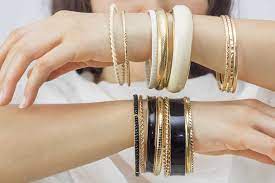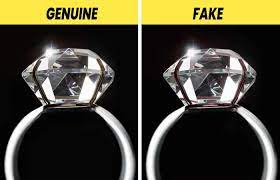
7 ways you can tell if your jewelry is real
- Roger
- 0
- on Dec 13, 2022
7 ways you can tell if your jewelry is real
When you’re shopping for jewelry, it’s important to be aware of the ways in which you can tell if it’s real. Here are seven ways to spot fake jewelry:
-The metal may be too light or too heavy for the piece. Real silver often weighs around 18-25 grams per cubic centimeter, while gold can weigh up to 500 grams per cubic centimeter. Jewelry made with cheaper metals might only weigh around 10-15 grams per cubic cent centimeters, which is lighter than real metal but still enough to cause problems if it’s worn in contact with the skin.
-The jeweler may have used a too low quality of metal in the piece. When silver is alloyed with other elements, it creates a variety of colors including yellow and green. Fake silver will usually not have any color at all and may even appear shiny because of the lack of alloying.
-Jewelers often use a coating to make pieces look more polished. This coating can be removed by rubbing alcohol or water, revealing a less refined finish beneath.
-Many times, when synthetic stones are used in jewelry, they will not look as realistic as natural stones would. Synthetic stones typically have a matte finish rather than the sparkle that natural stones produce.
-Some pieces of jewelry may have been altered in some way after being made, such as being glued together or having screws inserted into the materials where they wouldn’t normally go. This can
how do i learn to make jewelry
1. Look at the materials. Real jewelry is made with real materials, like diamonds or gold. Fake jewelry may be made out of materials like plastic or metal, which may look real but aren’t actually valuable.
2. Check the craftsmanship. Real jewelry is often well-crafted and has a high level of detail. Fake jewelry may be poorly made or lack any detail at all.
3. Compare the prices. Real jewelry usually costs more than fake jewelry does. This is because real jewelry is often made with higher-quality materials and has been tailored to specific tastes and styles.
4. Inspect the design and symbolism. Real jewelry often features intricate designs and symbols that have symbolic meaning. Fake jewelry may only feature simple shapes or symbols that have no meaning at all.

5. Test it out. If you’re not sure whether something is real or fake, you can always try it out on your skin to see if it feels rough or scratchy. If it does, it’s probably fake!
how does jewelry tarnish
Jewelry can tarnish in a variety of ways. Here are seven ways to tell if your jewelry is real:
1. Look for scratches. If the jewelry is made from a hard material, like gold or silver, it can easily scratch if you bump into something else. Gold and silver will also react with other chemicals in the air to form tarnish.
2. Check for signs of acidity. Jewelry made from materials like copper or brass may become acidic over time due to exposure to sulfuric acid or vinegar, respectively. This left behind a greenish or brown patina on the metal.
3. Check for signs of oxidation. Oxidization happens when oxygen molecules join together with metal atoms to form unstable compounds. This causes the metal to turn a dull gray color and can cause it to corrode over time.
4. Observe how the light reflects off of the jewelry. Real jewelry will reflect more light than imitation jewelry, which is often made from less expensive materials that don’t reflect light as well.
5. Touch the jewelry and feel it for weight and texture. Jewelry that is real will be heavier than imitation jewelry and have a more textured surface.
6. Check for fluorescence (or glowing). Sometimes gemstones will emit a faint glow when exposed to ultraviolet light, which can be used to tell if they’re real or not.
7. Compare prices and styles of different pieces of